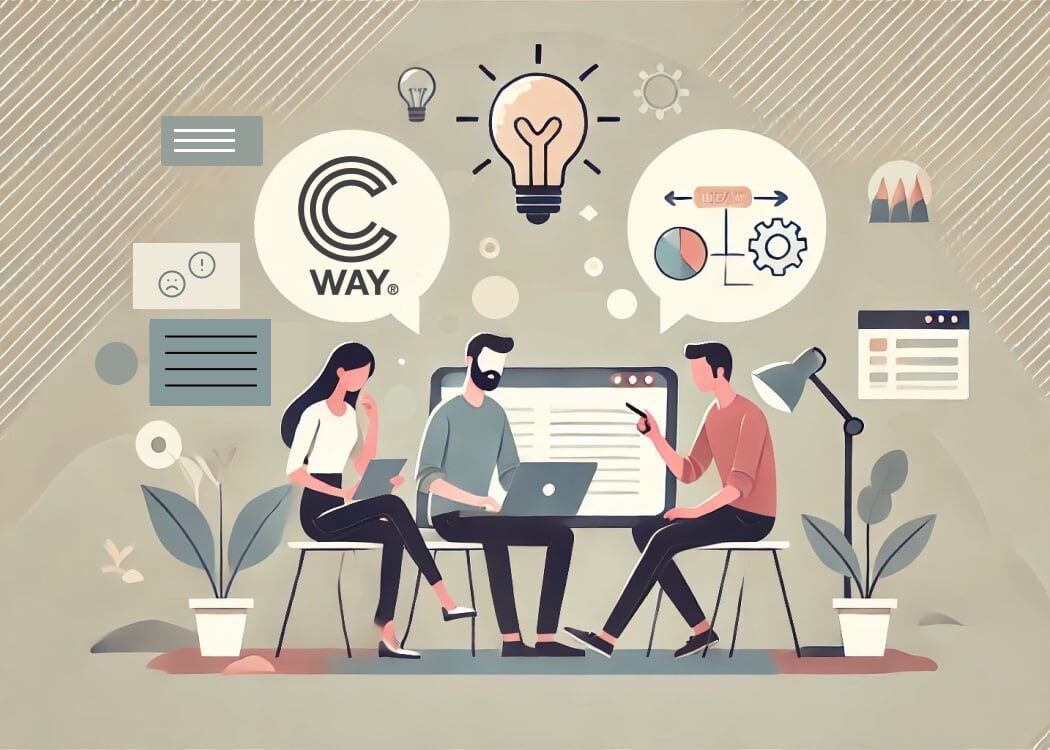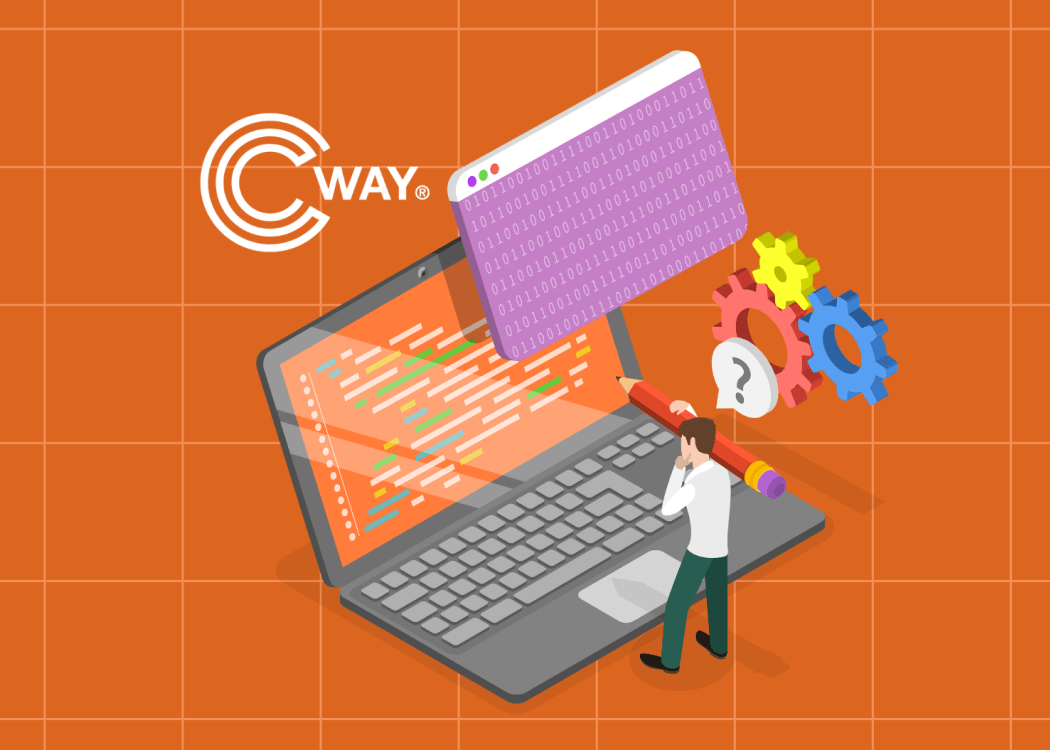How Cway software can transform your artwork management workflow
Creating exceptional designs is just the beginning—delivering them seamlessly is where the real challenge lies. In the FMCG and packaging industries,...

We all need people who will give us feedback.
That's how we improve.
Bill Gates
Design feedback is essential for turning ideas into reality. Whether you're an experienced designer or just someone involved in the creative process, learning how to give helpful feedback can significantly improve your design projects. In this article, we’ll break down what design feedback is, share tips on how to do it right, and show you how Cway can make your feedback process smoother and more efficient.
Design feedback refers to the process of reviewing and providing input on design work. It's a collaborative effort that involves reviewing designs and providing insights that can help improve the quality, functionality, and aesthetics of the output. It can be as simple as a verbal suggestion or as detailed as a written critique. The goal of design feedback is to improve the final product by refining ideas, identifying potential issues, and ensuring the design aligns with the project's goals and the client's expectations.
Effective design feedback should be clear, specific, and actionable, offering guidance that helps designers make improvements. When done well, feedback fosters collaboration, innovation, and a deeper understanding of the project objectives.
Giving good design feedback is a skill that enhances collaboration and ensures the design process moves forward positively. Here are some key strategies to provide effective feedback:
Be Specific: Avoid vague comments like "I don't like it" or "Make it pop." Instead, focus on specific elements that need improvement. For example, "The color scheme could be more cohesive" or "The layout needs to be more balanced."
Focus on Objectives: Align your feedback with the project's goals. Discuss how the design supports or detracts from these objectives and suggest changes that could bring the design closer to achieving them.
Be Constructive: Frame your feedback positively and focus on solutions rather than problems. Offer suggestions for improvement and encourage open discussion to find the best path forward.
Timing is Key: Provide feedback early and often. This helps prevent major revisions late in the project and ensures that the design evolves in the right direction from the start.
Encourage Collaboration: Foster a collaborative environment where everyone feels comfortable sharing their thoughts and ideas. This will lead to more innovative solutions and a stronger final product.
Be Respectful: Recognize the effort and creativity that goes into the design process. Approach feedback with empathy and respect, and be mindful of how your comments might be received.
Effective feedback loops are essential for successful design projects, and this is where Cway comes in. Cway offers tools and features specifically designed to enhance collaboration and streamline the feedback process.
Cway is not merely a tool; it's a strategic asset designed to enhance collaboration and ensure brand consistency. By centralizing communication, Cway eliminates the chaos of scattered feedback, making it easier to track changes and monitor approvals. This cohesion significantly improves the efficiency of design iterations, leading to better outcomes and increased customer satisfaction. The centralized platform fosters seamless transitions between different stages of the design process, enhancing collaboration and speeding up the approval process.
Cway’s visual feedback tools are a game-changer, allowing precise feedback directly on designs. This clarity minimizes ambiguity and ensures that revisions are actionable. With Cway, feedback can be shared and discussed in real-time, allowing for immediate clarification and collaboration. This speeds up the feedback process and ensures that everyone is on the same page.
Workflow automation is another forte of Cway. By automating the review and approval process, Cway ensures smooth project progression. Tasks can be assigned based on project roles or stages, and reminders for pending approvals keep the project moving forward efficiently.
Cway’s robust version control capabilities are critical for managing and tracking changes over time. This feature not only provides a clear audit trail of design evolution but also supports seamless collaboration by allowing team members to compare different versions, highlighting even the smallest differences.
Cway's visual annotation tools make it easy to provide specific, actionable feedback directly on the design itself. This helps designers understand exactly what changes are needed and reduces the chances of miscommunication.

Embracing Cway transforms your design feedback process into a seamless, collaborative effort, driving projects to success with fewer revisions and faster completion times. By streamlining communication, enhancing precision, automating workflows, and providing powerful analytics, Cway® is the ultimate tool for mastering design feedback in today’s fast-paced design environment.
In conclusion, effective design feedback is crucial for the success of any project. By understanding the essence of good feedback and utilizing innovative tools like Cway, teams can foster a culture of collaboration, continuous improvement, and innovation. Embrace these strategies and tools to revolutionize your design processes, ensuring that your projects not only meet the brief but exceed expectations.
Design feedback is the process of providing constructive criticism, opinions, and suggestions about a design project. It aims to improve the design by ensuring it aligns with project goals, user needs, and aesthetic standards. Feedback can come from various sources, including clients, team members, and end-users.
Common mistakes to avoid when giving design feedback include:
Design feedback should be provided regularly throughout the project, not just at the end. Early and frequent feedback helps guide the design process, prevents major revisions later, and ensures the design evolves in the right direction.
Here is a short list of books that provide insights into giving effective design feedback and improving communication within design teams:
"Discussing Design: Improving Communication and Collaboration through Critique" by Adam Connor and Aaron Irizarry
"Critiqued: Inside the Minds of 23 Leaders in Design" by Christina Beard
"Radical Candor: Be a Kick-Ass Boss Without Losing Your Humanity" by Kim Scott
"The Design of Everyday Things" by Don Norman
"Artful Making: What Managers Need to Know About How Artists Work" by Rob Austin and Lee Devin
These books offer practical advice and strategies for enhancing design feedback and fostering collaboration within creative teams.

Creating exceptional designs is just the beginning—delivering them seamlessly is where the real challenge lies. In the FMCG and packaging industries,...

Timing is everything. In a market where trends shift overnight, getting your product to shelves before the competition is crucial. But moving faster...
%20(1).jpg)
Given the whirlwind nature of product launches, where timing is critical and perfection is imperative, ensuring your artwork proofing process is...